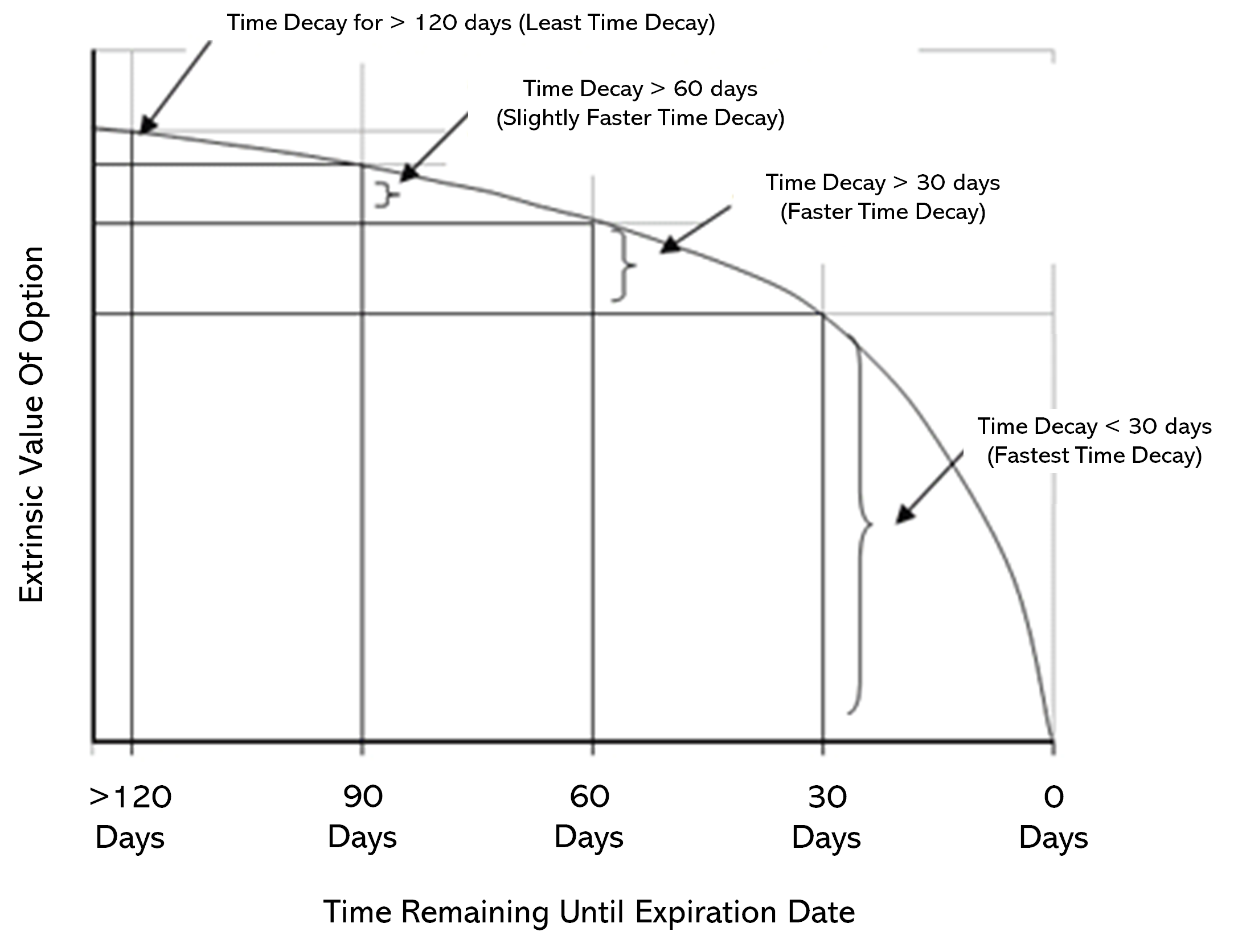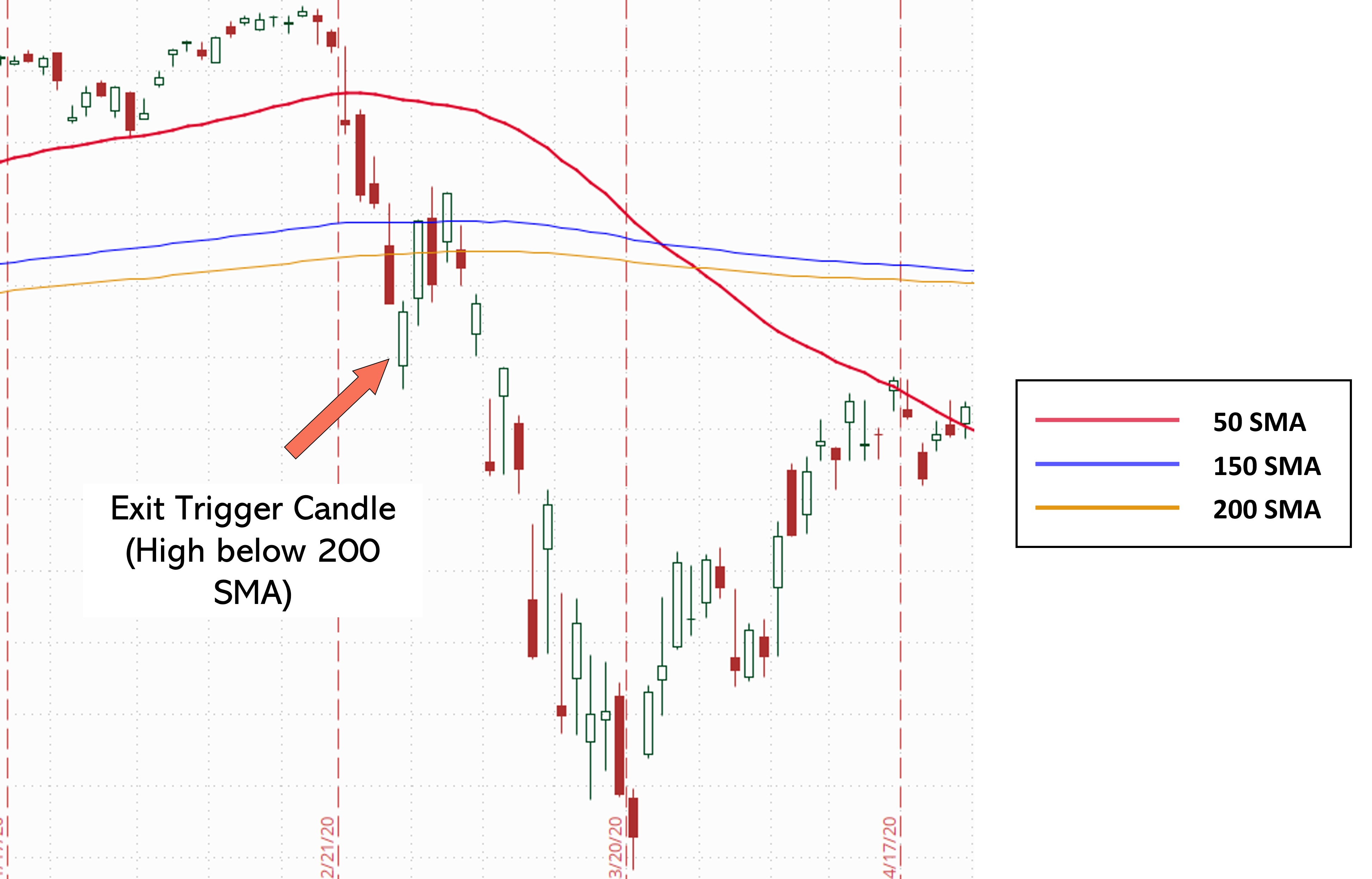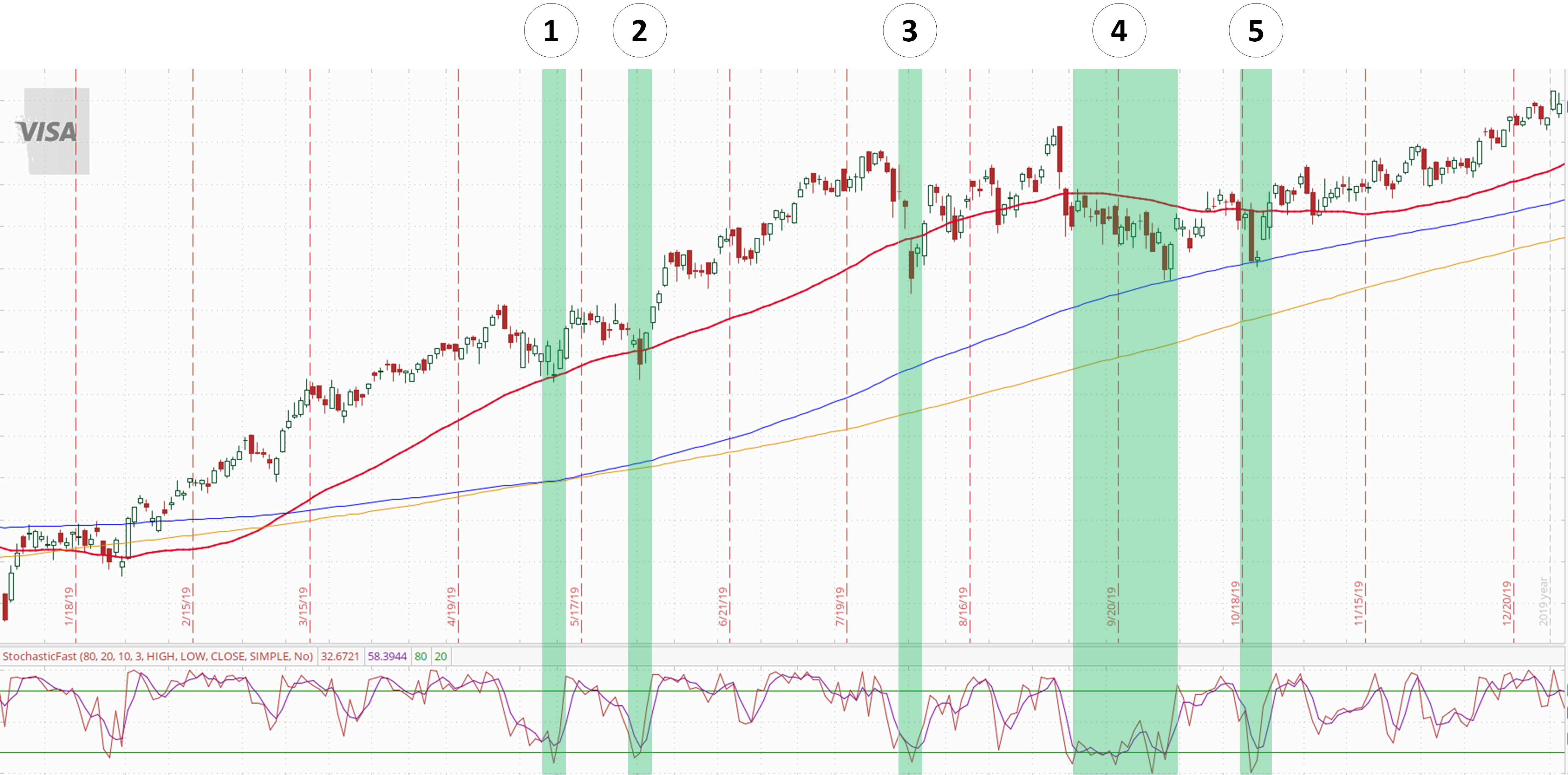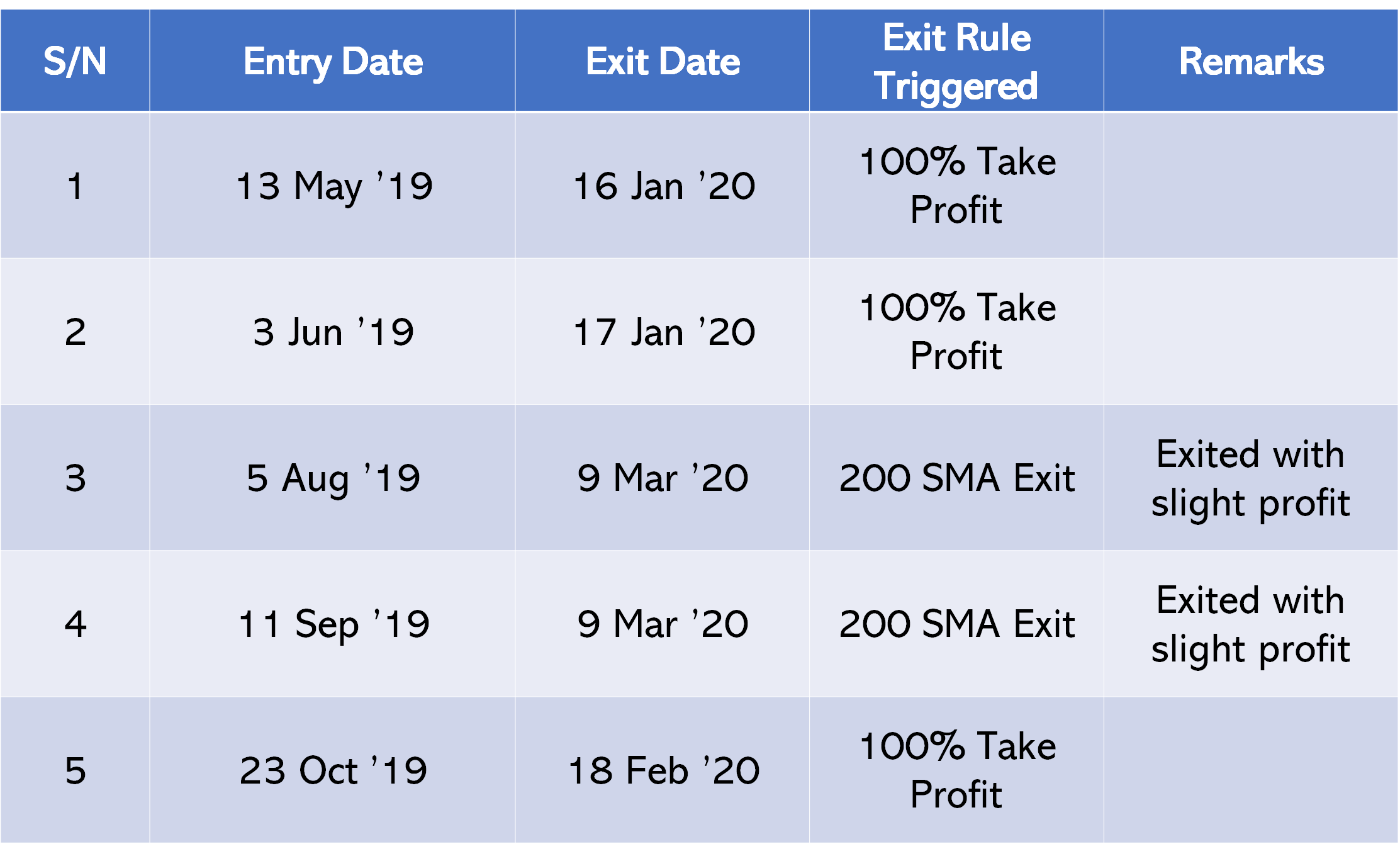Exit Rules For Call Options
Options Investing Hub ⮞ Long Call Options ⮞ Exit Rules For Call Options
6 RESOURCES
⮞ Introduction
⮞ Pros & Cons Of Long Call
⮞ What Stocks To Buy Using Call Options
⮞ Entry Rules Of Long Call
⮞ Strike Price & Expiry Date Selection
⮞ Exit Rules Of Long Call
Exit Rules Of Long Call

We have now discussed the entry rules of the long call strategy and also how we select the strike price and expiry date of the option.
Right now, we want to go through two important exit rules of the long call strategy:
- Taking Profit
- Rule-based Stops
How To Take Profit
The idea with this long call strategy is that it is a trend-following strategy that is anchored on the stock's strong fundamentals.
There are two different scenarios of taking profit:
- Taking profit when P/L hits 100%
- Taking profit (or loss) when the stock fulfils the stop rules*
*stop rules will be discussed later
As with trend following strategies, we want to ride the trend as long as possible until there is a change in trend.
That's why most of the long call options exit are usually based on the second scenario which is stop loss rules, rather than the trade hitting 100% profit.
Therefore, to execute this strategy well - is really to have a hands-free and emotionless approach.
(Sometimes, I realised the more I ignore the stock price movements and just follow the rules - the more profitable my portfolio becomes.)
The 3 Rule-based Stops
So there are 3 rule-based stops.
Fun Fact: The word "stop" comes from the term "stop-order", which is an order submitted to the broker to exit the position no matter what, if a certain rule is met.
So these are rule-based stops.
This means that as long as the any one of these three rules are met - I will exit the trade (mercilessly).
I will not tell myself things like, "maybe it will go back up if I wait a little longer..."
Rules are rules - and I will follow these 3 rule-based stops when using the long call strategy.
So here are the 3 exit rules:
- 1The option is left with less than 120 days expiry
- 2The high of the candle is below the 200 SMA
- 3The option has lost 50% of its value
Less than 120 days expiry
This is also known as a time-stop.
The reason for this rule is because of time decay.
Remember that time decay starts to speed up as the option expiry gets closer.

So we want to avoid getting ourselves into fighting with time.
Remember that option pricing is: Intrinsic Value + Extrinsic Value.
(Read more at "What Determines Option Pricing")
So when the time decay gets faster - your extrinsic value is rapidly decreasing.
This means that the intrinsic value has to increase even more to offset the losses from time decay.
Closed Below 200 SMA
When a candle's high is below the 200 SMA, this can be a signal of a downtrend starting.
This also means that the entire candle is below the 200 SMA.

In the above image, you can identify the exit trigger candle where the high is below the 200 SMA.
This is a potential signal of a downtrend, as you can see above.
Remember that this is just a potential signal - It does not mean that the market cannot rebound.
However, it will be much safer to exit your position when the signal appears before its too late.
The 50% cut loss
I have to say that it is very rare for this to happen because the strategy uses call options with long expiry date and with delta of more than 0.7.
So among the three rules, these is the stop that is very seldom triggered as we are buying strong companies.
However, it is still important to follow this rule.
This is so that you recover capital in order to re-deploy this capital in the next trade.
What Most People Struggle With
What most people will struggle with are two things:
- Riding the trend of the stock.
- Following the exit rules
Riding the Trend
It is probably tempting for most people to take profit when the stock has an increase in share price - and your call options are already making a good 30% return.
However, here's why I wouldn't take profits early.
Because in a year, there are not many entry points of the long call strategy.
For example, in 2019, there were only 5 entry points in Visa.

Click to enlarge image
And based on the exit rules - these are how the trades turned out based on back testing software using ThinkorSwim:

That's why, once I get into a position, I will want to ride the trend all the way, until it reaches my exit rules or if it hits a 100% profit.
And you can see that it is possible to have a 100% profits on your call options.
What most people struggle with is entry 3 and 4.
Because they would think to themselves, "Damn, I should have sold earlier and taken my profit".
Well, hindsight is 20/20 - and there is no perfect strategy.
Bonus: Entry 3 and 4 were making substantial profits before the drop below 200 SMA. It must have been disappointing for people who entered these trades.
One way to avoid such disappointments is to put stop order on your trades when you already made substantial profits. So that even if the market were to tank - at least you know you would have secured some profits.
Following The Exit Rules
One of the biggest reasons why most people will struggle following the exit rules is because they always mistakenly think that they are able to predict the movement of stock market.
In reality, nobody is able to do that. And if there was - chances are that its luck.
The reason why I follow these exit rules is so that I don't have to actively monitor the stock market.
All my exits are decided beforehand - and all I have to do is to follow the rules.
As long as the rules are met - I will exit the trade even if it is at a loss, and I will exit the trade with no emotions attached (because I have already done my portfolio sizing).
What's Next
This is the end of the "Long Call Strategy".
I really hope that you enjoyed this section, as this is one of the strategies that helped me grow when I was just starting out.
One final advice is to follow the rules and always have a long term outlook on your investments - and the stock market will reward you over time.
In our next section, we will be covering "Selling Put Options" strategy - so see you there!
Note: One of the biggest reasons why the options hub was built as there were too many people who get burnt because of the lack of knowledge of how options works and its risks involved. This resource hub aims to equip beginner investors with the knowledge of options and how they can manage their risks when investing with options.



